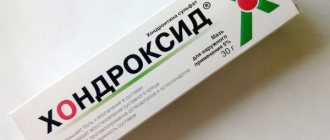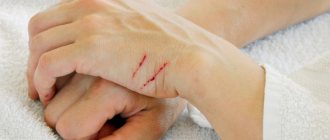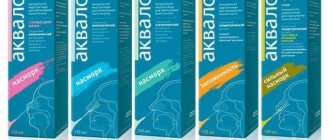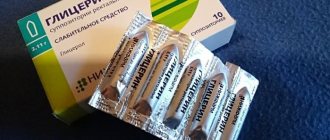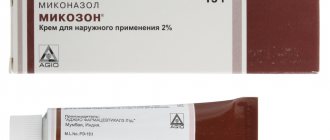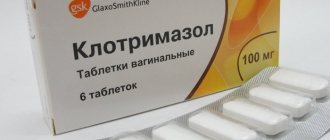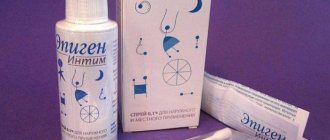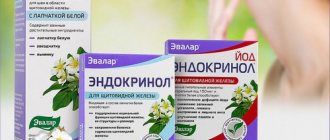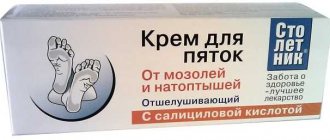(average: 0.00 out of 5)
Pityriasis rosea is a skin disease that is allergenic and infectious in nature . The reasons and nature of its appearance have not yet been fully studied. This disease is also known as roseola exfoliating and pityriasis. Treatment for pityriasis rosea is varied, both with ointments and tablets.
- Ointment for pityriasis rosea for children
- What ointment is needed for pityriasis rosea during pregnancy
Pityriasis rosea appears as pink spots that appear on various parts of the body. They have different diameters, sometimes more than two centimeters. The spots are very itchy and flaky . After some time, the stain acquires a yellowish tint.
An effective cure for this disease has not yet been invented. The spots go away on their own after some time. However, since they itch a lot and cause discomfort, ointment for pityriasis rosea in humans is widely used, the names of which will be discussed further.
Top
You may also be interested in:
- Antiviral ointments for papillomas
- We found moles on the body - the reasons for their appearance and whether they can be dangerous read here.
- A popular diagnosis is allergic dermatitis, symptoms and treatment in adults https://idermatolog.net/allergy/allergicheskij-dermatit-simptomy-i-lechenie.html
Antihistamines
The main symptom of pityriasis rosea is itching, which accompanies a rash on the body in adults and children. It causes especially severe discomfort when the stains are located in places where they are irritated by clothing or sweat. The patient constantly scratches the affected areas, as a result of which the condition worsens, and wounds appear on the body where infection can occur.
To reduce itching from pityriasis rosea spots, it is recommended to review your diet and eliminate allergens from it - citrus fruits, chocolate, eggs, smoked foods, etc.
To eliminate itching, antihistamines (antiallergic) drugs with different mechanisms of action and active ingredients are prescribed.
Most often they are taken in the form of tablets; children may be prescribed medications in the form of drops. In severe cases, patients require intravenous and intramuscular infusions of drugs.
Loratadine
The main active ingredient of the drug is loratadine. It has an antihistamine and antipruritic effect, which lasts quite a long time, due to which it effectively reduces the manifestations of the disease.
The medicine has virtually no contraindications - it should not be taken in case of individual intolerance, severe impairment of liver function, pregnancy and lactation. For pityriasis rosea it is prescribed to both adults and children over 2 years of age. Analogues of Loratadine (contain a similar active ingredient) - Lorizan, Claritin, Lotharen.
Suprastin
One of the most common, proven drugs used to treat allergic reactions. Its action is based on chloropyramine hydrochloride, and is available in the form of tablets and solutions for intramuscular injection.
The therapeutic effect develops half an hour after administration and lasts from 3 to 6 hours. The medicine is reasonably priced and is sold in every pharmacy, but has a wide list of contraindications and side effects. For this reason, many doctors call it outdated and prescribe it in rare cases.
L-cet
An antihistamine that contains levocetirizine hydrochloride as an active ingredient. Sold in the form of tablets or syrup, the composition of excipients depends on the form of release. It is used for pathological conditions accompanied by itching, rash, urticaria, swelling and other allergic manifestations.
The medicine has a minimum of contraindications (individual intolerance, chronic kidney disease) and rarely causes side effects. It can be taken for a long time - for chronic diseases, treatment can last several months.
Complete analogues are Cetrilev, Citrine, Xyzal.
| Drug name | Active substance | Manufacturer | price, rub. |
| Suprastin | Chloropyramine hydrochloride | Eshis Pharmaceutical Factory, Hungary | 140 |
| Loratadine | Loratadine | Kievmedpreparat, Ukraine | 80 |
| L-cet | Levocetirizine hydrochloride | Kusum Helthker, India | 175 |
Most antiallergy drugs have a serious side effect - they cause severe drowsiness. To prevent therapy from affecting your quality of life, it is best to drink them before bed. If the patient feels drowsy in the morning, the medicine needs to be changed or the dosage adjusted.
What is pityriasis rosea or pityriasis Gibert?
Zhiber's lichen appears on any part of the body and face. It can be single, but most often group rashes form near the maternal plaque. Ringworm can have any form. Externally, the spot is pink, clearly outlined with a red border. Initially, the skin of the lichen is smooth, later the top layer becomes rough, and the lichen acquires a yellowish tint. In rare cases, blisters and small nodules may be present on the plaques. This happens in people with low immunity.
With Gibert's disease, plaques of different appearance are simultaneously present on the body. This is explained by the cyclical nature of the disease and the varying timing of the rash.
Photo of pink lichen:
Causes:
- Hypothermia or overheating
- Stress
- Allergic reactions
- Infectious diseases
- Impaired or weakened immune system
- Insect bites (lice, bedbugs, fleas)
- Avitaminosis
The disease can last from 4 weeks to 6 months. All this time, the plaques change shade, and the peeling of the skin changes intensity. There may be itching that lasts for several days. Less commonly, pityriasis rosea is accompanied by fever, enlarged lymph nodes and general malaise.
Hormonal ointments
Hormonal ointments are considered the most effective remedies against itching and inflammation. They contain glucocorticosteroids - substances similar in composition to adrenal hormones.
Such drugs relieve the unpleasant symptoms of pityriasis rosea well, but require caution when used, as they can cause side effects. If long-term treatment is necessary, the patient should consult a doctor - constant exposure of glucocorticosteroids to the body can cause dysfunction of the adrenal glands.
Triderm
A complex product that contains three components - clotrimazole, betamethasone, gentamicin. It is used for dermatological diseases that manifest themselves as rash, itching and urticaria - dermatoses, eczema, lichen, etc. The cream is applied to the affected areas and rubbed until completely absorbed, the frequency of use is twice a day.
The drug can be used on affected areas of the skin, for syphilis, tuberculosis, chicken pox, and in children under two years of age. Side effects include dryness and irritation of the skin, pigmentation disorders, and increased manifestations of the disease.
Akriderm
The main active ingredient of the drug is betamethasone, which relieves itching, inflammation and swelling, and also destroys fungal spores. The cream is effective for all types of dermatitis, psoriasis, eczema, and skin itching of allergic origin. It is used 1 to 6 times a day - the ointment is rubbed into the skin until completely absorbed, but sometimes the doctor can prescribe an individual treatment regimen.
Contraindications include dermatological manifestations of tuberculosis and syphilis, individual intolerance to components, open wounds on the skin. Undesirable reactions of the body during treatment are rare and include itching, dryness and burning at the site of application.
Lorinden A
The drug contains antimicrobial components, hormones and salicylic acid. It effectively eliminates the manifestations of dermatitis of various etiologies, lichen, lupus and urticaria, and is not used for fungal and gynecological infections, bacterial lesions, under the age of 2 years. The cream is used 1-2 times a day - it is applied to the skin in a thin layer and gently rubbed.
The duration of treatment is determined individually depending on the characteristics of the body and the clinical course of the disease.
Side effects include allergic reactions and secondary infections.
| Drug name | Active substance | Manufacturer | price, rub. |
| Triderm | Gentamicin, dipropionate, clotrimazole | Schering-Plau Labeau, Belgium | 475 |
| Akriderm | Betamethasone, gentamicin, clotrimazole | Akrikhin, Russia | 350 |
| Lorinden A | Salicylic acid, flumethasone pivalate, propylene glycol | Elfa pharmaceutical plant, Poland | 1050 |
The course of treatment with hormonal ointments depends on the condition of the patient’s body and the clinical course of the disease. During therapy, it is worth considering that drugs can be addictive, and with long-term use they can cause serious complications. On average, they are used from 2 to 4 weeks.
The therapeutic effect of clotrimazole
The skin and mucous membranes are affected by various species and strains of microscopic fungi belonging to the group of dermatophytes. They feed on keratin in the epidermis, nails and hair. The genera Epidermophyton, Trichophyton, Microsporum, and representatives of the genus Candida have pathogenic properties. The latter cause thrush and affect the skin and internal organs of a person. Yeast-like microorganisms of the genus Malassezia cause pityriasis versicolor (pityriasis versicolor).
Action of clotrimazole:
- antifungal
- against Trichophyton rubrum, Epidermophyton, Microsporum, Candida albicans, Malassezia folliculitis; - antiprotozoal
, mainly trichomonacid, - the ability to suppress the causative agent of trichomoniasis (the simplest organism Trichomonas); - antibacterial
- against strains of bacteria staphylococci and streptococci.
The fungistatic effect of clotrimazole is expressed in growth retardation and reduction in the reproduction of microscopic fungi, which ultimately leads to their death. Fungicidal effect - suppression of the germination of parasite spores in the skin, nails, mucous membrane, which completely blocks the development of infection. What effect will be achieved depends on the type and strain of the microbe, the concentration of the active ingredient.
Resistance is rarely developed in fungi against which clotrimazole is used.
The causative agents of mycoses parasitize in the upper layer of the skin. Clotrimazole acts on microorganisms directly at the site of the lesion. The medicine penetrates the epidermis, but is not absorbed into the blood through the skin. If the active substance enters the systemic bloodstream, it is destroyed in the liver. Decomposition products are excreted through the gastrointestinal tract and kidneys.
Antiseptic drugs
Preparations for the treatment of pityriasis rosea include antiseptic ointments, which are used as adjuvants. They are not able to eliminate the symptoms of the disease, do not fight fungal or viral infections, but in combination with other means they reduce itching and discomfort. The most common and accessible products in this category are salicylic and zinc ointments.
Pityriasis rosea usually does not recur, but people with HIV and cancer may experience repeated episodes of the disease.
When using it, it is important to remember that without additional treatment they are practically ineffective, therefore they can only be used as auxiliary drugs.
Salicylic and zinc ointments are considered safe, but have contraindications and side effects. Before treatment, you must read the instructions and follow medical recommendations.
Salicylic ointment
The active component of salicylic ointment has a drying, irritating and antiseptic effect. It prevents pathogenic microorganisms from entering the wound, relieves irritation and helps exfoliate dead elements of the rash.
Thanks to this, the rashes quickly disappear, and the integrity of the skin is restored. The ointment is applied several times a day, the duration of the course depends on the scale of the lesion, the severity of symptoms and the general condition of the patient.
Zinc ointment
A topical preparation based on zinc oxide. Its action resembles the effect of using salicylic ointment. The substances that make up it dry out the rash, accelerate the removal of dead epidermal cells and heal the affected tissue.
Zinc ointment works best in combination with antihistamines, sulfur, salicylic ointment and other medications. The product is applied to the skin up to 5 times a day, the course of treatment ranges from 8 to 15 days, if indicated, the duration of use is increased.
Sulfuric ointment
The active ingredient of the drug has an antibacterial and antiparasitic effect, that is, it fights bacteria and skin parasites (hypodermic mites, etc.), but is ineffective against fungi or viruses. Sulfur ointment prevents the occurrence of secondary infections, dries out the weeping elements of the rash, and accelerates the healing of the skin.
Most often it is used in combination with other drugs - zinc, salicylic ointment and other local remedies. The product is applied to the skin in a thin layer 2-3 times a day, the course of treatment is determined by the doctor.
Tsindol
Tsindol is a combined local remedy that includes zinc oxide, glycerin, starch and ethyl alcohol. It reduces itching, discomfort, pain and other symptoms of pityriasis rosea, and is especially effective for weeping ulcers. Tsindol relieves irritation and swelling, has a disinfecting effect and significantly alleviates the condition of patients.
The ointment contains relatively safe components, therefore it has a minimum number of contraindications - treatment is not recommended if you are individually intolerant to the drug. Available in the form of a suspension, which is applied to the affected areas several times a day, the course of treatment depends on the severity of symptoms and the spread of the pathological process.
Diagnosis and symptoms
In both adults and children, pityriasis rosea occurs in the same way: first, a large maternal plaque appears on the skin - most often on the neck, back or chest. Diameter - up to 5 cm. After a week, secondary rashes appear around it, smaller in size (one and a half times). The central part of the plaques turns yellow, the edges begin to peel off. Over the course of a month, some rashes fade and disappear, and new ones appear nearby. During this period, the patient may complain of weakness and body aches. Some people experience severe itching, its intensity increases after a hot shower or emotional shock. Gibert's disease has one characteristic symptom - the rash is located along Langer's lines, along which maximum stretching of the skin is observed.
Sometimes one medical examination is enough to make an accurate diagnosis. An experienced dermatologist can easily distinguish the manifestations of pityriasis rosea from psoriasis. However, often people whose symptoms persist for more than 6 months turn to doctors. In this case, it is necessary to conduct additional diagnostics. It allows you to cast aside doubts about the diagnosis of diseases: secondary syphilis, psoriasis - have similar symptoms. To clarify the diagnosis, skin particles are raked from the edges of the plaque and sent for histology. Additionally, bacteriological seeding of the scraping is carried out, which reveals the infectious pathogen or fungus.
Antiviral agents
It was not possible to accurately determine the causative agent of pityriasis rosea, but some studies prove that it is caused by the human herpes simplex virus. Accordingly, local and oral drugs with antiherpetic activity are often used in the treatment of the disease. These are usually medications based on acyclovir, a substance considered most effective in fighting the virus.
Acyclovir
A drug based on acyclovir, which is available in tablet form. Prescribed for infectious processes caused by herpes simplex virus type 1 or 2. When interacting with enzymes, it forms an active compound that blocks the proliferation of pathogenic cells.
The standard dose is 200 mg 4-5 times a day, the duration of treatment is 5 days. Acyclovir is not used in cases of individual intolerance to the components, a tendency to allergic reactions, or under the age of 2 years. The list of side effects of the drug is quite large, ranging from digestive disorders to headaches and hallucinations.
The most common drugs based on acyclovir are Acyclovir, Zovirax, Gerpevir, Panavir.
| Drug name | Active substance | Manufacturer | price, rub. |
| Acyclovir | Acyclovir | Darnitsa, Ukraine | 100 |
| Gerpevir | Acyclovir | Kievmedpreparat, Ukraine | 750 |
| Zovirax | Acyclovir | GlaxoSmithKline Manufacturing, Italy | 200 |
| Panavir | Acyclovir | Lanafarm, RF | 400 |
Most often, tablets are used in the treatment of pityriasis rosea; in advanced cases, injections and infusions are necessary. Antiviral drugs are ineffective against other types of pathogenic microorganisms, so before treatment it is necessary to accurately determine the causative agent of the disease. If there is no result, the drug is discontinued, otherwise it may cause side effects.
Basic treatment recommendations
When treating a fungal infection (ringworm, pityriasis versicolor), it is very important to prevent the spread of the disease and re-infection. To do this, all clothing, linen and personal items of the patient are disinfected.
It is better to use professional apartment cleaning services. When cleaning yourself, add bleach to the water for washing and washing floors (100 ml per 1 liter of water); combs and cutlery are soaked in the same solution. Pillows and mattress should be treated with chlorhexidine steam.
Pink, red, white, shingles are not contagious, so such precautions are not required. It is recommended to avoid water procedures during treatment. You can use wet wipes and local hygiene procedures where there are no stains. It is important to remove allergens from the diet (honey, citrus fruits, chocolate), and sweets should be reduced.
Other medicines
If indicated, other medications may be used in the treatment of pityriasis rosea. If elements of the rash cause pain, patients are recommended to use ointments and gels containing anesthetics (usually lidocaine) - Oflocaine, Inflarax, etc. When the temperature rises and general health deteriorates, take antipyretic drugs and non-steroidal anti-inflammatory drugs - Aspirin, Ibuprofen, Indomethacin, Naproxen.
Pityriasis rosea is a non-contagious disease, so the patient does not pose a danger to others even during periods of exacerbation.
When secondary infections occur in pityriasis rosea, antibiotics are used, most often erythromycin. To heal the skin, you can lubricate it with Bepanten, Panthenol, Solcoseryl or other ointments that promote regeneration.
Folk remedies for pityriasis rosea can only be used in combination with medications, otherwise they can aggravate the course of the disease and cause serious complications.
Is pityriasis rosea contagious?
Pityriasis rosea is contagious! But it is not always transmitted and is mainly transmitted to people with weakened protective functions of the body. Infection can occur through close bodily contact or the use of hygiene items (washcloths, towels, combs, underwear). If someone in the family has Zhiber's disease, close contact should be limited. There is a popular belief that lichen is transmitted to humans from animals. Only pigs can get pityriasis rosea, but their form is non-contagious and is not dangerous for people.
Analogs
In some cases (including those described above), the doctor may prescribe Clotrimazole substitutes, either with a similar active ingredient or based on other components. The prices for these drugs vary, but almost all of them are available in the budget segment.
- Direct substitutes: “Imidil”, “Amiclon”, “Kanizon”, “Candide”, “Canesten”.
- Minor analogues: “Futsis”, Fungoterbin”, “Lamisil”, “Pimafucin”.
Analogues or substitutes are selected only by the attending physician. In parallel, he may prescribe drying or antiseptic medications.
Prevention
To avoid recurrent skin pathology conditions, it is necessary to regularly take preventive measures: lead a healthy lifestyle, eliminate bad habits, include sports, eat a balanced diet and in small portions. In addition, maintain personal hygiene and also remain cautious in public places. It is also necessary to strengthen the immune system and treat other diseases in a timely manner.
Ringworm in humans Pityriasis versicolor Lichen planus Herpes zoster Pink lichen of Zhibera Solar lichen
Bottom line
Pityriasis rosea brings a lot of inconvenience to the patient. These are not only cosmetic defects and inflammation, but also, if the disease has progressed far enough, unpleasant itching. All therapeutic measures should be aimed not only at alleviating symptoms, but also at restoring the health of the whole organism.
Ointments, various tablets, vitamins and other remedies can bring the expected result, but only if the doses are prescribed adequately and the timing of treatment is chosen correctly. A dermatologist will help with this.
Do not be afraid to seek help from specialists, because it is better to be under the supervision of an experienced doctor than to subsequently treat the results of possible complications.
